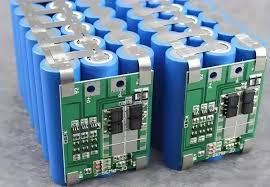Lithium-Ion Battery Pack Market Pain Points Hindering Sustainable Growth Trajectory
The lithium-ion battery pack market has become a cornerstone of modern energy storage solutions, powering electric vehicles (EVs), consumer electronics, grid storage systems, and industrial applications. Despite its widespread adoption and technological advancements, the market is riddled with persistent pain points that challenge both manufacturers and end-users. From raw material shortages and high production costs to recycling inefficiencies and safety concerns, these issues continue to slow down growth, limit accessibility, and create operational complexities. Addressing these pain points is critical to unlocking the full potential of lithium-ion battery technologies in the years ahead.

High Cost of Production and Ownership
One of the most significant pain points in the lithium-ion battery pack market is the high cost of production and ownership. Battery packs represent a substantial portion of the total cost of electric vehicles, often accounting for over 30% of the final price. This cost barrier makes EVs less accessible, particularly in price-sensitive markets. Even though battery costs have declined in recent years, fluctuations in raw material prices and the cost of advanced manufacturing equipment continue to put upward pressure on prices. Manufacturers are under constant pressure to balance performance, energy density, and affordability without compromising quality.
Raw Material Dependency and Supply Volatility
Lithium-ion battery packs rely on a set of critical raw materials such as lithium, cobalt, nickel, and graphite. The global supply chain for these materials is highly concentrated, with a few countries dominating mining and processing. This dependency makes the market vulnerable to geopolitical tensions, trade restrictions, and export bans. Additionally, the environmental and ethical concerns associated with cobalt mining—particularly in certain African nations—create reputational risks for manufacturers and investors. These raw material supply challenges lead to cost volatility and potential production disruptions, impacting delivery timelines and profit margins.
Battery Degradation and Limited Lifecycle
Another critical issue is battery degradation over time, which affects performance, range, and customer satisfaction. Lithium-ion battery packs lose capacity with each charge-discharge cycle, especially under extreme temperatures or heavy load conditions. This degradation shortens the effective lifespan of the battery and increases total cost of ownership. For electric vehicles and large-scale storage systems, replacement of battery packs becomes a significant expenditure. Despite advancements in battery management systems and chemistry, improving long-term durability remains a persistent technical challenge.
Safety Risks and Fire Hazards
Safety remains a major concern in the lithium-ion battery pack market. Thermal runaway events, which can lead to battery fires and explosions, pose risks to users and property. These incidents, though statistically rare, gain significant public and media attention, affecting consumer confidence and brand reputation. Manufacturing defects, improper installation, or physical damage can all trigger safety failures. As battery packs grow in size and energy density, particularly in electric vehicles and industrial use cases, the need for robust safety protocols and thermal management systems becomes more urgent.
Recycling Challenges and Environmental Impact
As battery use becomes more widespread, the issue of end-of-life battery disposal and recycling is becoming more pressing. Lithium-ion battery recycling infrastructure is still underdeveloped in many parts of the world. Effective recycling is complex and costly, involving the safe extraction of valuable materials like lithium, cobalt, and nickel. Improper disposal not only leads to environmental contamination but also wastes finite resources. The lack of standardized recycling processes and economic incentives further exacerbates this pain point, creating a long-term sustainability issue for the industry.
Inadequate Charging Infrastructure
For applications like electric mobility, the success of lithium-ion battery packs is directly linked to the availability of efficient charging infrastructure. In many regions, especially developing economies, charging networks are either insufficient or unreliable. This lack of infrastructure contributes to range anxiety among EV users and slows down adoption rates. Furthermore, fast-charging technologies, while improving, can accelerate battery degradation if not properly managed. Solving infrastructure and energy distribution issues is key to removing this bottleneck in the value chain.
Regulatory Inconsistencies Across Regions
The global nature of the lithium-ion battery market means that companies must comply with diverse and often inconsistent regulations regarding safety, transport, recycling, and energy efficiency. These regulatory differences create barriers to market entry and complicate international trade. For example, what is permissible in one country may be restricted in another, leading to compliance costs and logistical challenges. Harmonizing regulations and creating global safety and environmental standards would significantly ease these pain points.
Technological Obsolescence and Competitive Pressure
The pace of innovation in battery technology is incredibly fast, with breakthroughs occurring regularly in areas like solid-state batteries, silicon anodes, and lithium-sulfur chemistries. While this innovation is positive for the industry as a whole, it creates constant pressure on current manufacturers to keep up or risk becoming obsolete. Companies must continually invest in research and development to stay competitive, which strains budgets and complicates long-term planning. For newer entrants or smaller firms, this barrier to technological parity can be particularly difficult to overcome.
Conclusion
The lithium-ion battery pack market, while essential to the global transition to clean energy, is grappling with a range of persistent pain points. High production costs, supply chain vulnerabilities, safety issues, and recycling inefficiencies continue to challenge stakeholders across the value chain. To ensure sustainable and inclusive growth, the industry must address these challenges through innovation, policy support, and collaboration. Solving these pain points will not only stabilize the market but also unlock new levels of efficiency, safety, and accessibility for lithium-ion battery technologies worldwide.
- Art
- Causes
- Crafts
- Dance
- Drinks
- Film
- Fitness
- Food
- Games
- Gardening
- Health
- Home
- Literature
- Music
- Networking
- Other
- Party
- Religion
- Shopping
- Sports
- Theater
- Wellness


